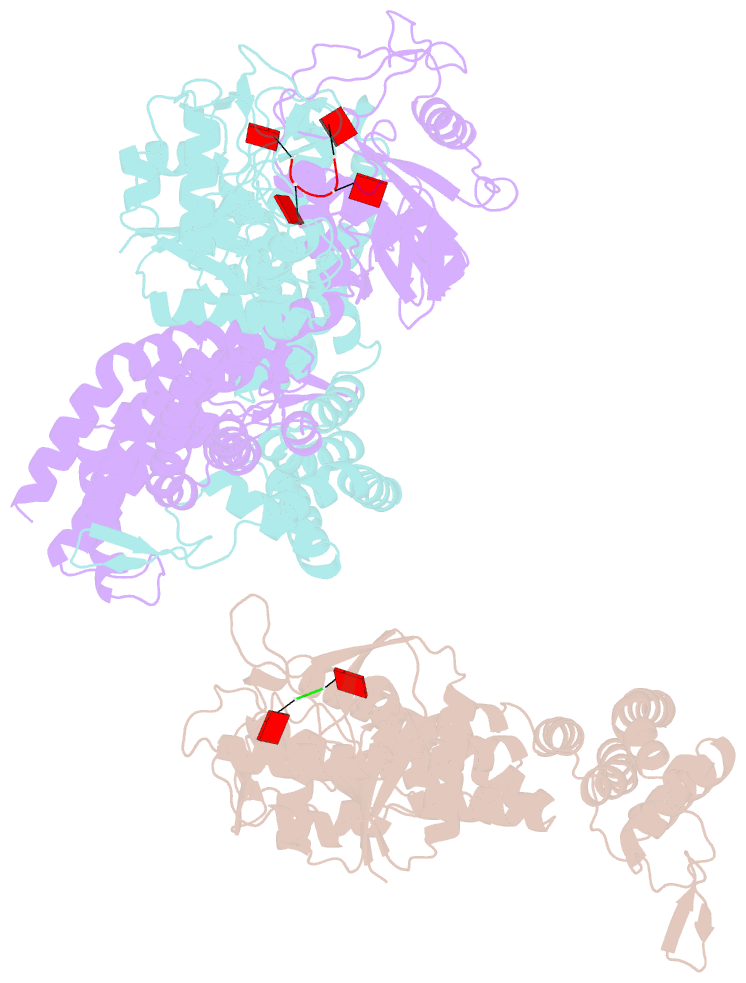Summary information and primary citation
- PDB-id
- 6r9r; SNAP-derived features in text and JSON formats;
DNAproDB
- Class
- RNA binding protein
- Method
- X-ray (2.7 Å)
- Summary
- Crystal structure of csx1 in complex with cyclic oligoadenylate coa4 conformation 2
- Reference
- Molina R, Stella S, Feng M, Sofos N, Jauniskis V, Pozdnyakova I, Lopez-Mendez B, She Q, Montoya G (2019): "Structure of Csx1-cOA4complex reveals the basis of RNA decay in Type III-B CRISPR-Cas." Nat Commun, 10, 4302. doi: 10.1038/s41467-019-12244-z.
- Abstract
- Type III CRISPR-Cas multisubunit complexes cleave ssRNA and ssDNA. These activities promote the generation of cyclic oligoadenylate (cOA), which activates associated CRISPR-Cas RNases from the Csm/Csx families, triggering a massive RNA decay to provide immunity from genetic invaders. Here we present the structure of Sulfolobus islandicus (Sis) Csx1-cOA4 complex revealing the allosteric activation of its RNase activity. SisCsx1 is a hexamer built by a trimer of dimers. Each dimer forms a cOA4 binding site and a ssRNA catalytic pocket. cOA4 undergoes a conformational change upon binding in the second messenger binding site activating ssRNA degradation in the catalytic pockets. Activation is transmitted in an allosteric manner through an intermediate HTH domain, which joins the cOA4 and catalytic sites. The RNase functions in a sequential cooperative fashion, hydrolyzing phosphodiester bonds in 5'-C-C-3'. The degradation of cOA4 by Ring nucleases deactivates SisCsx1, suggesting that this enzyme could be employed in biotechnological applications.





